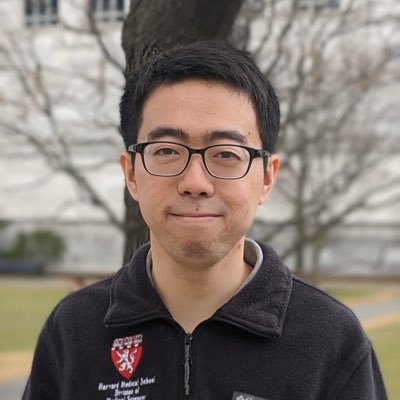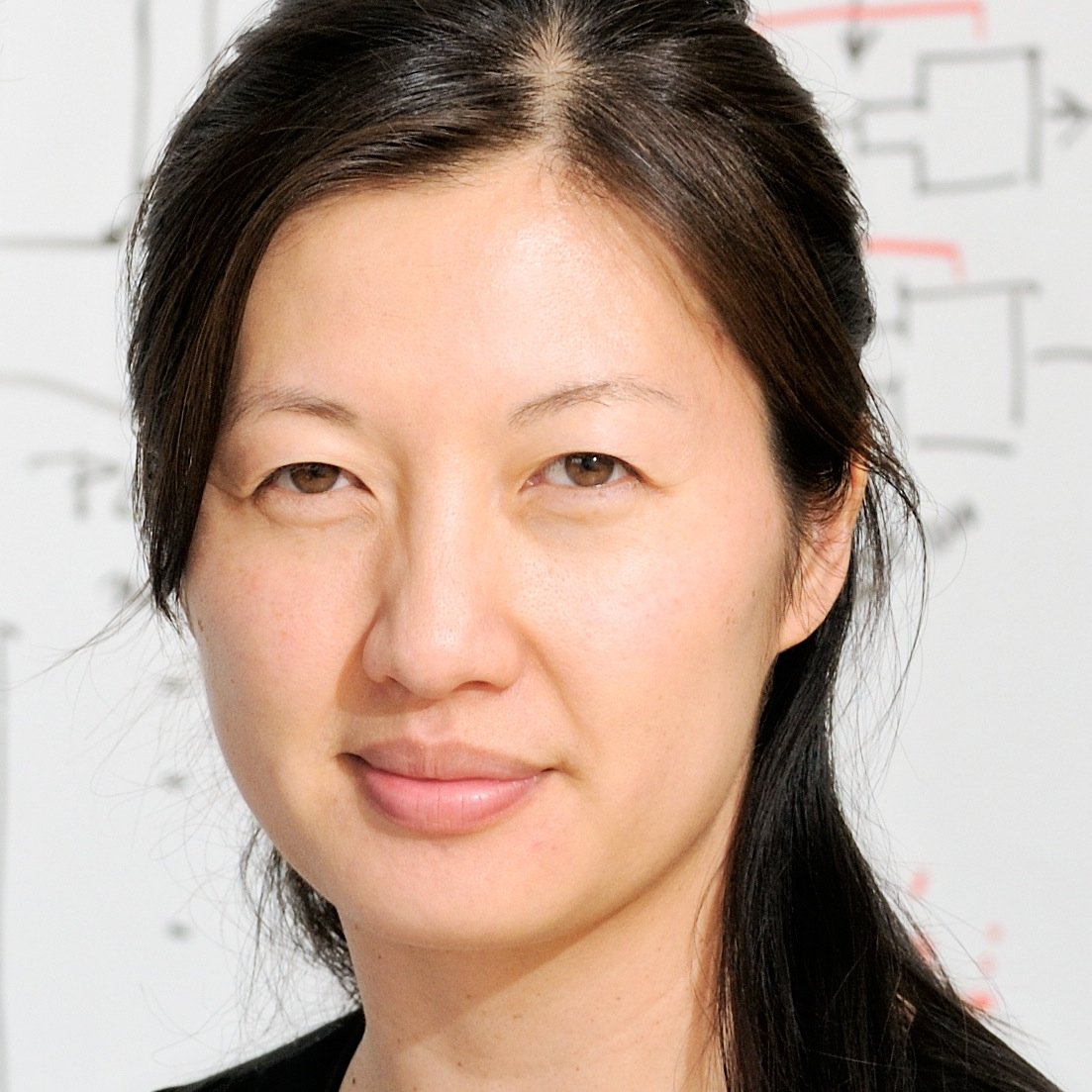
Julia Joung
@JuliaJoung
Followers
2K
Following
3K
Media
42
Statuses
1K
Postdoc in the lab of Jonathan Weissman @WhiteheadInst. PhD Feng Zhang lab | @MITdeptofBE | @broadinstitute
Boston, MA
Joined May 2018
Thrilled to share my primary PhD work: a Transcription Factor Atlas for understanding gene regulation and cell engineering @CellCellPress. We created a comprehensive TF ORF library and applied it to profile resulting expression changes. A thread 1/X
27
295
1K
Our GDE preprint now accepted to #NeurIPS2025! 🎉 We show how to lift any encoder-decoder to learn representations of distributions not just datapoints—unlocking multiscale modeling across domains: from cell populations to DNA methylation to viral evolution. Try GDEs for a
New lab preprint! 🚀 Modeling complex data distributions is tough. We designed GDEs, a new framework that tackles this head-on! GDEs generalize across text, images & MANY bio apps (think virtual cells, spatial bio, viral genome tracking). Thread 👇
1
3
27
I'm thrilled to share our work from @JswLab ( https://t.co/CMzQznSXPN). We developed LOCL-TL, an optogenetic approach for monitoring localized translation in mammalian cells. LOCL-TL revealed two mechanistically distinct strategies for mitochondrially localized translation.
11
39
147
Hi everybody! I am super excited to share the work done during my PhD published in @nature today! We describe a new mechanism of self- vs. non-self RNA discrimination by showing how N-glycans shield glycoRNAs from stimulating endosomal RNA sensors
nature.com
Nature - N-glycans on glycoRNAs prevent innate immune sensing of endogenous small RNAs, and the natural mechanism they use demonstrates how glycoRNAs exist on the cell surface and in the endosomal...
16
79
477
Excited to announce that this work is now live as a first release article @ScienceMagazine So grateful for this fantatic team and to see this work in wild!
science.org
Charting the spatiotemporal dynamics of cell fate determination in development and disease is a long-standing objective in biology. Here, we present the design, development, and extensive validation...
1/14 On behalf of the amazing team in @JswLab, we’re excited to share PEtracer ( https://t.co/QTyBahCCLS) a prime editing-based evolving lineage recorder compatible with both scRNA-seq and high-resolution imaging readouts in intact tissue. By applying PEtracer in a syngeneic mouse
6
18
91
SPIDR enables multiplexed mapping of RNA-protein interactions and uncovers a mechanism for selective translational suppression upon cell stress: Cell
cell.com
SPIDR, a massively multiplexed method that simultaneously maps dozens of RNA-binding proteins to their RNA targets at single-nucleotide resolution, uncovers new RNA-protein interactions and provides...
1
17
87
Why do some genetic mutations devastate specific tissues while sparing others? We explore this question in GGC repeat disorders, revealing a mechanism linking protein aggregation to tRNA splicing failure in the brain. 🧵 on our new paper in Science: 🔗
science.org
Aggregation-prone polyglycine-containing proteins produced from expanded GGC repeats are implicated in an emerging family of neurodegenerative disorders. In this study, we showed that polyglycine...
17
54
200
Just published in Nature (June 2025), Andersen et al. (@EAChiocca, Reardon, @QuintanaLabHMS) developed a novel viral barcode interaction-tracing (RABID-seq) platform, uncovering previously unknown immunosuppressive interactions between astrocytes and glioblastoma (GBM) cells.
2
33
176
Repeat-element RNAs integrate a neuronal growth circuit: Cell
cell.com
SINEs of recovery: A subset of small RNAs encoded by repetitive genomic elements are induced by nerve lesion to regulate protein synthesis and enhance axonal growth.
0
9
46
PAPER ALERT! Excited to share my PhD work in the lab of @larsplus @CRGenomica. We screened minimalistic synthetic enhancers throughout myeloid differentiation. We uncovered widespread dual activator-repressor functions for individual TFs and TF pairs https://t.co/D3XlH99RH7 (1/n)
cell.com
Screen of minimalistic enhancers in blood progenitor cells demonstrates widespread dual activator-repressor function of transcription factors (TFs) and enables the model-guided design of cell-state...
3
23
101
Stem cell therapy for Parkinson’s disease has entered a new era. Two @Nature studies demonstrate that pluripotent stem cell–derived dopamine neurons can survive, restore function, and potentially change the treatment paradigm for this neurodegenerative disease.
21
279
1K
This is the most important paper in the circadian field in over a decade. A completely new clock component that is evolutionarily conserved. @Eric_E_Zhang @susanksgolden @ @SRBR_Outreach
https://t.co/Gh8fUhDeP7
8
98
385
What protects individuals from developing blood cancers? Thrilled to share my work in @bloodgenes lab, describing inherited resilience protecting blood stem cells from clonal hematopoiesis by modifying RNA regulation. 🧵👇(1/n) https://t.co/PNaCHa4D4k
3
38
92
The massive changes in US research brought about by the new administration of President Donald Trump are causing many scientists in the country to rethink their lives and careers https://t.co/cWGoHyeewI
nature.com
Nature - More than 1,600 readers answered our poll; many said they were looking for jobs in Europe and Canada.
35
217
495
The latest from @GladstoneInst of Cardiovascular Research and @ucsf: Isha Jain's lab, with an outstanding discovery of a small molecule that mimics hypoxia, to treat neurodegenerative diseases. The amazing Sylar Blume, RA in Isha's lab, is first author!
cell.com
A small molecule that increases oxygen-hemoglobin affinity was shown to prevent and reverse pathology in a mouse model of mitochondrial disease, thereby enabling a practical form of hypoxia therapy.
1
18
81
Thrilled to be launching @terrainbiosci today! Revolutionizing RNA medicines with our AI-powered design & manufacturing platform Helping biotechs get better mRNA candidates to patients, faster 🧬 #biotech #RNAmedicine w/ @jgooten @pdhsu Chetan and many others (awesome team!)
Terrain Biosciences, backed by high-profile players in biotech, will design and supply RNA molecules for new therapies.
11
22
141
It’s been a tough few weeks. My 10yo daughter was diagnosed with a very rare, aggressive cancer called interdigitating dendritic cell sarcoma (IDCS). I’m reaching out to identify clinicians/patients who have encountered pediatric IDCS, indeterminate dendritic cell histiocytosis
1K
5K
19K
Big #RegenerativeMedicine advance! New study demonstrates the use of iPSC-heart muscle to treat a patient with heart failure. The patches successfully engrafted, contributing to heart repair. Patient survived 3 months before receiving a heart transplant
nature.com
Nature - Epicardial engineered heart muscle allografts from induced pluripotent stem cell-derived cardiomyocytes can safely and effectively remuscularize chronically failing hearts in rhesus...
1
25
82
Super excited to share our new study from the @JD_Buenrostro Lab in @Nature! We developed a computational method for tracking transcription factor and nucleosome binding using single-cell ATAC-seq and deep learning. Paper:
nature.com
Nature - We developed PRINT, a computational method that identifies footprints of DNA–protein interactions from bulk and single-cell chromatin accessibility data across multiple scales of...
12
134
527
Could one envision a synthetic receptor technology that is fully programmable, able to detect diverse extracellular antigens – both soluble and cell-attached – and convert that recognition into a wide range of intracellular responses, from transgene expression and real-time
61
251
964



























